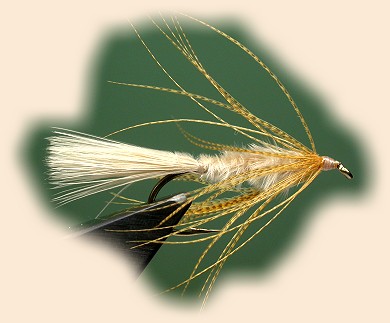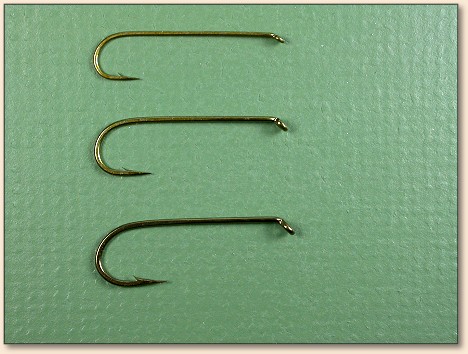
1. Choose a hook with a shank length of approximately 1".
Shown here, top to bottom: Size 10 TMC 300 (6XL), size 6 TMC
5263 (3XL), and size 4 Mustad 9671 (2XL).
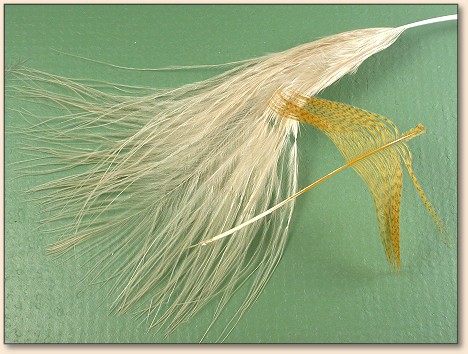
2. Prepare one marabou and one mallard feather: (1) Prep the
marabou blood feather by stroking the barbs toward the tip. Pull
off any barbs from the bottom of the feather stem that do not
extend to the tip. A stem stripped clean of barbs at the base
of the feather will create a cleaner tie-off after wrapping
the body. Usually if I create a "wand" of marabou that is 3X
the length of the shank, it will be about the right length; (2)
Prep the mallard feather by holding the tip with one hand and
stoking the barbs away from the tip with the other hand. Tear
off the bottom barbs until you have about ½" of barbs remaining
along both sides of the stem. The barbs at the tip of the feather
can be trimmed with scissors so only "stubble" remains along the
thin stem of the tip (as shown).
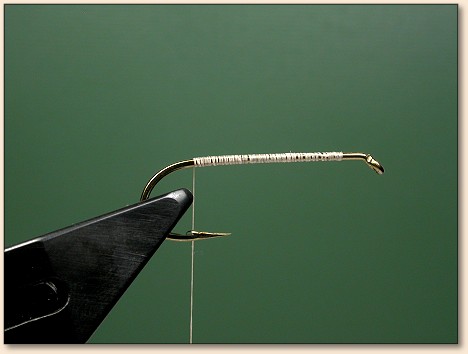
3. Prepare a thread base over the hook shank. In this example
the hook is a size 4 Mustad 9671 and the thread is tan Danville 3/0.
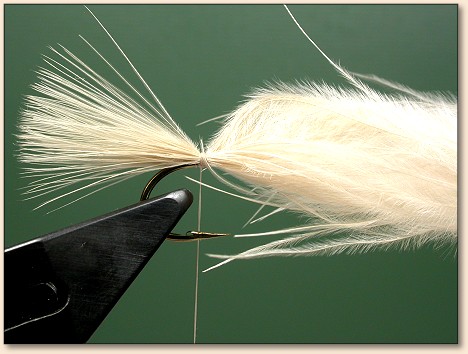
4. Tie in the marabou feather so that the feather tip creates
a tail. I tie the tail so it is equal in length to the hook shank
(as shown), or shorter. Black is my favorite color, but tan is
more photogenic.
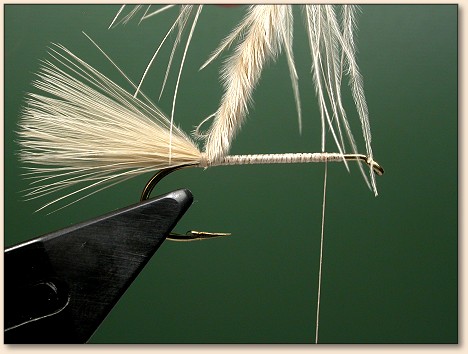
5. Between the fingers and thumb of your right hand, twist
the feather stem clockwise to create a "rope" of marabou.
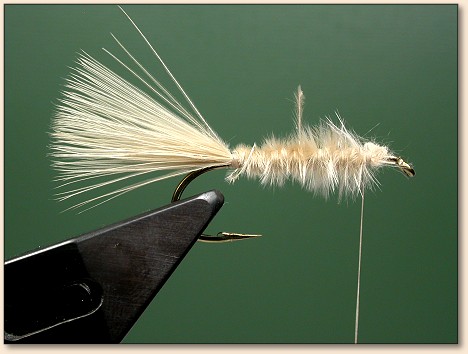
6. Wrap the marabou rope forward and over the shank like chenille
on a woolly bugger. For a tight body, you will need to put an
additional clockwise twist into the rope after each subsequent
wrap around the shank. If done correctly, after the final wrap,
there should only be stem left. (The marabou rope used here
was obviously a bit long). Tie the butt of the stem down and
snip off the excess.
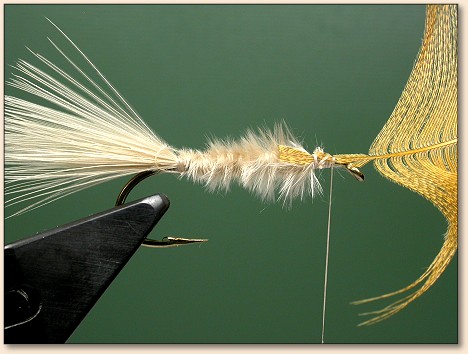
7. Tie in the mallard feather by the tip, with the concave side
of the feather facing up. In this example I chose to tie-in with
the tip aimed toward the rear of the fly.

8. Pull the butt of the mallard feather back over the tip.
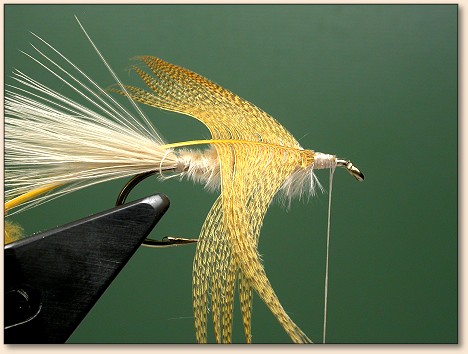
9. Wrap the thread back and forth over the folded area.
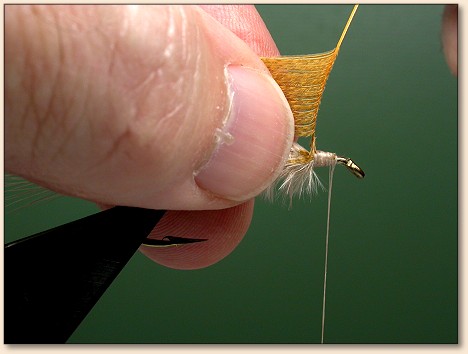
10. With the right hand, hold the stem vertically, and with
the left hand stroke and fold the hackle barbs back, toward
the rear of the hook. Now, wrap the mallard feather around
the hook until a soft hackle collar has been created. Two or
three wraps are about right.
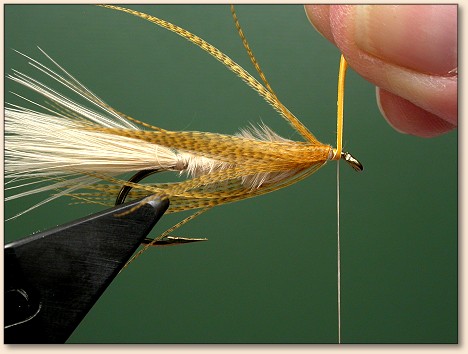
11. After the hackle wraps have been completed, make one final
wrap using the bare stem. This will make the tie-down easier
and cleaner.
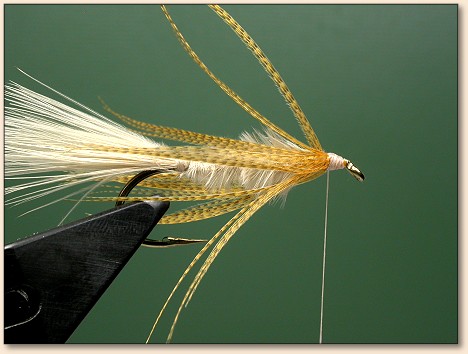
12. Take a few snug wraps of thread around the bare stem and
snip off the excess stem. Create a head with the tying thread.

13. Use a couple of whip knots or half-hitches to complete the
fly. I like to add a little shine to the head by dabbing it
with thinned nail polish. ~ Peter Failey

